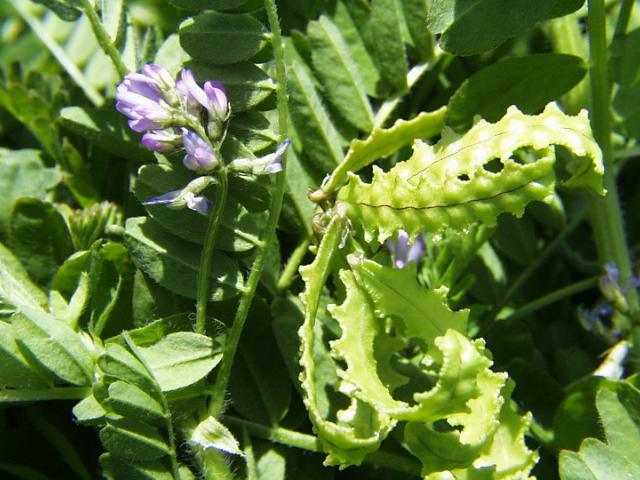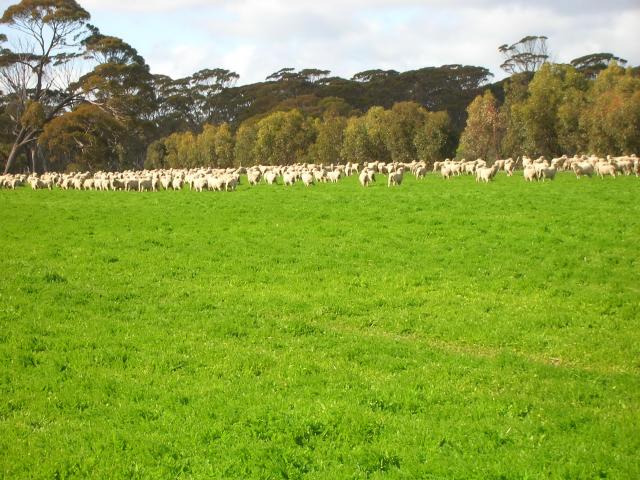Introduction
Biserrula (Biserrula pelecinus) is well adapted to a wide range of soil types with varying pH and can be grown with most other pasture species. It is a very productive species with a deep root system and provides green feed for up to a month longer than subclover at the end of the growing season.
Stock often preferentially graze the non-legume weed component which leads to a biserrula dominant pasture. This is highly beneficial for the management of herbicide resistant weeds such as annual ryegrass and wild radish. Well nodulated biserrula pastures can also supply valuable nitrogen for cereal crops grown in rotation.
There are two cultivars of biserrula: Casbah and Mauro, which differ in maturity and degree of hard-seededness. Casbah flowers 100-105 days after emergence whereas Mauro flowers about two weeks later.
Casbah has a high level of hard seed and is ideal for intensive cropping systems typical of the 325-500 millimetres (mm) rainfall region. It is recommended that Casbah pastures should be cropped in the year after establishment. Mauro has better regeneration in second year pastures and is suited to mixed farming and permanent pastures in the 450-700mm rainfall region.
Grazing tolerance and feed quality of biserrula
Biserrula has a prostrate growth habit which gives it a high tolerance of grazing compared with other aerial seeding pasture legumes. In the establishment year grazing should be limited, ensuring stock are removed at flowering and not replaced until after pod ripening. This allows for maximum seed production and the build-up of an adequate seed bank for future regeneration.
Biserrula can germinate rapidly on early autumn rain and the seedlings have good drought tolerance in comparison to other annual legumes. It can therefore provide an important source of early feed. Early grazing of regenerating stands of biserrula promotes prostrate growth. These stands are able to set seed even with moderate grazing pressure during flowering. Grazing can provide excellent control of wild radish and ryegrass and some control of doublegee.
During spring biserrula has the ability to stay green for up to four weeks longer than subclover, due to a deeper root system (up to 2m). This can be a valuable contribution in livestock systems such as weaning or finishing lambs.
Up to 45% of ingested seeds survive passage through the digestive tract of sheep (more in cattle) and there can be considerable spread of biserrula in manure. Consequently, summer grazing has little impact on persistence. Biserrula provides a high quality feed for stock over summer as it maintains a higher crude protein (CP), dry matter digestibility (DM) and metabolisable energy (ME) than cereal stubble.
| Feed source | Sample date | ME (Megajoules per kilogram (MJ/kg) DM) | CP (%) | DM digestibility (%) |
|---|---|---|---|---|
| 75% biserrula pasture | 29/10/07 | 9.3 | 15.5 | 63.4 |
| 62% biserrula pasture | 08/11/07 | 8.3 | 15.5 | 57.7 |
| Wheat straw | Shortly after harvest Nov-Dec 2006 | 6.9 | 4.3 | 49.7 |
| Barley straw | Shortly after harvest Nov-Dec 2006 | 7.5 | 6.1 | 52.9 |
| Oat straw | Shortly after harvest Nov-Dec 2006 | 8.0 | 6.9 | 55.9 |



